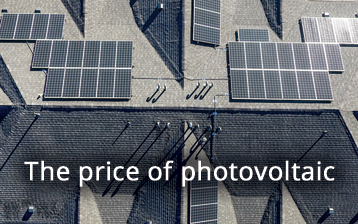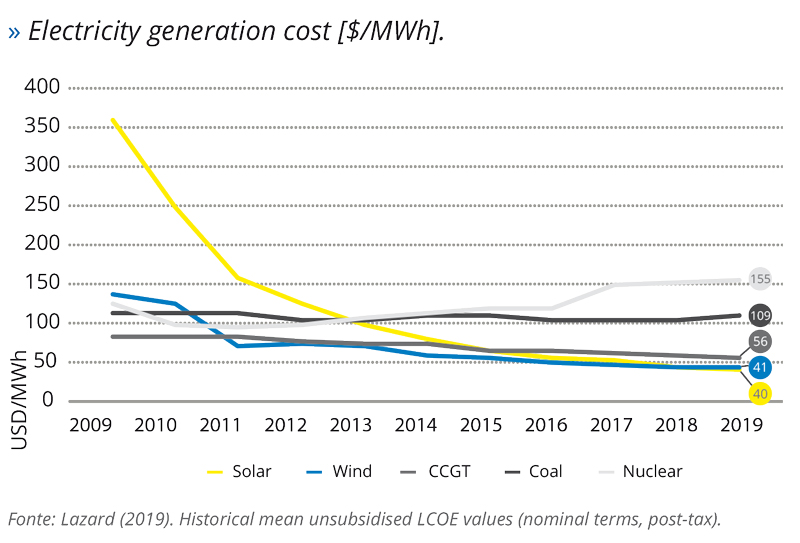In addition to environmental factors and public opinion, the growth of photovoltaics is driven by the reduction of costs.
In about 10 years, the cost of energy produced by a “utility-scale” photovoltaic system, meaning plants in the order of GW, has dropped by more than 80%.
From utility scales to the domestic
The reasons for the competitiveness of photovoltaics can be summarized in the following points:
- Technological improvements both on the product and on the systems of production;
- Simplification in project development systems;
- A broad and solid base of experience that allows you to do accurate assessments and predict lifelong manufacturability waiting for the plant;
- Renewable technologies can be easily scalable and modular.
In recent years, as can be seen from the graph taken from SolaPower Europe, the trend in the cost of electricity generation for different energy sources has been shown: solar and wind are the cheapest sources!
To compare the costs
To compare the costs of energy produced from different sources and methodologies, the experts use a parameter called LCOE (Levelized cost of electricity) which takes into account several factors: the cost of design, components, installation, financial, maintenance and plant producibility.
Target for 2030
87 governments around the world have included the objectives to be achieved in their official policy for renewable energy by 2030.
According to these objectives, about 720 GW of new capacity should be built between photovoltaic, wind and other renewable energy (according to BloombergNEF analysis).
At the same time, private companies have also pledged to use more renewable sources, with an estimated need of around 210 TWh by 2030.
An additional 100 GW of new renewable plants should be built. Putting together public and private needs, they would serve investments of around $1 trillion over the next 10 years!
The advantages of the small and medium
From the point of view of the cost of electricity generation, photovoltaics, even for small and medium-sized plants, are competitive and offer significant advantages.
The photovoltaic systems on the roof can compete on the retail price of energy, guarantee production close to consumption, green, decentralized and are obviously a starting point for storage.
The drivers to the development
For a substantial development which among other things involves an increase significant business for the renewable energy chain, it is necessary that the legislative scenario, of incentives, and technician, update with some tools:
- the definition of the rules and advantages so that they can operate the “aggregators” of both production plants in the market that of accumulation;
- load management in order to optimize self-consumption and energy storage; electric mobility is part of this context in which the charging and discharging of the batteries in the car it can be coordinated with the state of the network and energy produced;
- promoting the advantages of solar photovoltaics such as smart, flexible, decentralized and green technology available of all;
- the definition and regulations so that they can develop “social” energy exchanges through cryptocurrencies based on blockchain technology that will allow energy to be shared between owners of photovoltaic systems and other users.







